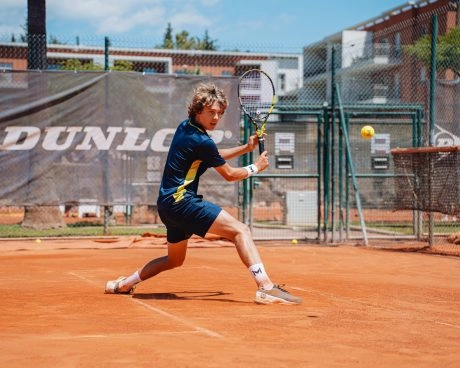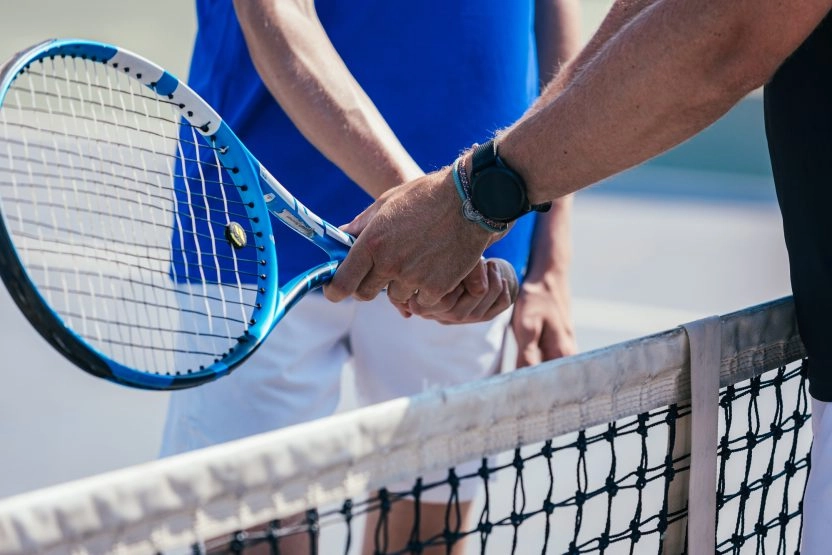
Do you prefer a one-handed backhand?
This grip can be used when executing a one-handed backhand to make a flat (dry) shot along the line and to start producing some lifted spin to make your opponent play over the shoulder.

The hammer grip is a specific hand position on a specific part of the handle of a tennis racket. It can be used by players at all levels, from beginners through to advanced players and competitors. It provides manoeuvrability and precision in both small and large games. The hammer grip is used as a reference for certain tennis shots and is highly versatile. Take part in an intensive tennis course or tennis study programme at the Mouratoglou Academy to work on your racket grip.

First of all, balance the tennis racket on the edge of its frame on the ground. It will then be easy to pick up the racket and feel the grip.
The handle of a tennis racket is made up of different parts. There are four flats and four chamfers , also known as edges. As a guide, the part of the grip that touches the ground when the racket is balanced on its edge is the lower flat. The upper flat is the part opposite the lower flat. When you take the hammer grip, it’s on this last part of the handle that you position your hand toexploit its benefits.
A tennis grip is shaped by the position of the hand on the racket handle. It is determined by the position of the hypothenar eminence (a muscular protrusion formed on the inside of the palm by the three short motor muscles of the little finger) on the grip of the tennis racket. This reference point will be decisive in understanding the hammer grip. To find it, position your palm towards the ground then turn your right hand (or your left hand) towards you so that you can see the inside of the palm of your hand this time.
Starting at the base of the little finger, work your way down towards the elbow. Thehypothenar eminence is at an almost perpendicular angle between the base of the little finger and the base of the thumb. It is higher than the palm of the hand, towards the bottom left. Position this part on the top flat of the tennis racket. Feel the position of your fingers on the handle.
To find it, younger children will need to put the racket down on the edge of its frame. As a rough guide, ask them to squeeze the racket so that they can get used to it. The adjustment will be made gradually.
Where would you like to go?
France
Mouratoglou Academy, Biot, French Riviera, France

NORTH AMERICA
LATIN AMERICA
EUROPE
ASIA
MIDDLE-EAST & AFRICA
Who would you like to contact?
FRANCE
Mouratoglou Academy, Biot, French Riviera, FRANCE

NORTH AMERICA
LATIN AMERICA
EUROPE
ASIA
MIDDLE EAST & AFRICA